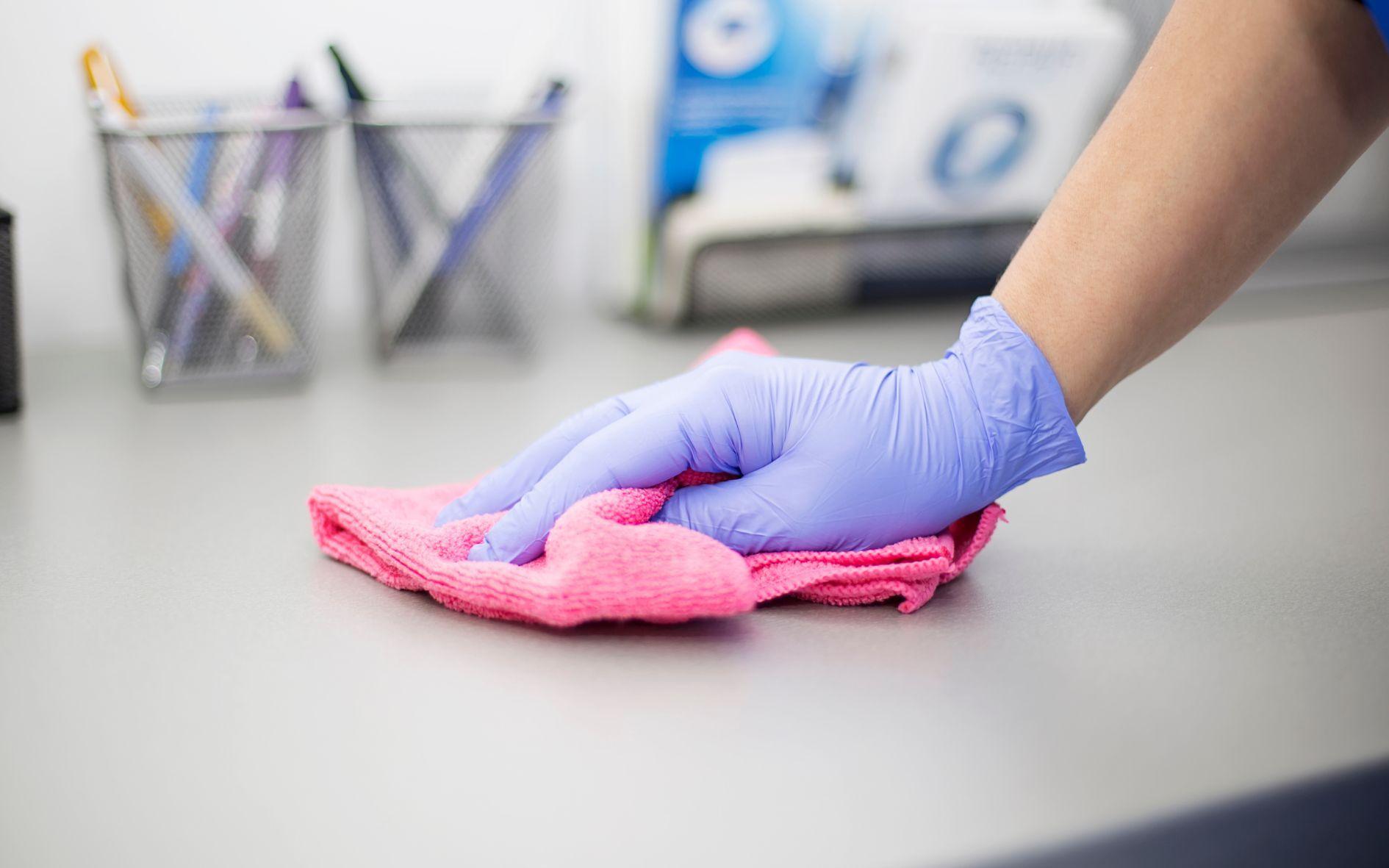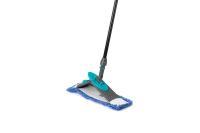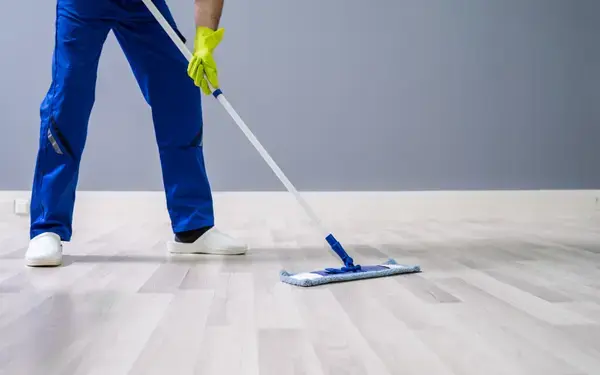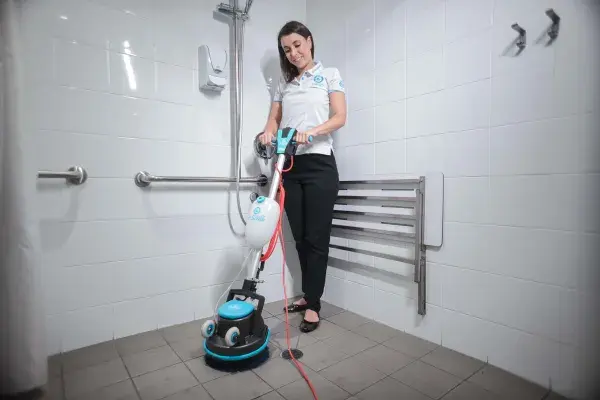You are reading: The Importance of Touchpoint Cleaning for Businesses
07 August 2022
9min read time
Brooke Payne
The Importance of Touchpoint Cleaning for Businesses
Share:

Key Insights
- High touchpoint cleaning is perhaps the most basic and straightforward step you can take to stop the transfer of germs and viruses from one person to another
- Effective touchpoint cleaning removes traces of germs, viruses, mould and bacteria that would otherwise grow in a short period of time on the most commonly touched areas of your business
- Items in your environment like door handles, tables and chairs, hand rails, elevator buttons, benchtops, taps, computers and toilet buttons are all touched by different people throughout the day
It’s clear to see that in the wake of a global pandemic, more attention and resources than ever before have been channelled toward high-level cleaning practices like touchpoint cleaning.
If the past two years have taught us anything, it’s that taking a proactive approach to cleaning the surfaces that are most frequently touched by employees and visitors is a basic, yet fundamental principle that curbs the spread of viruses.
What is Touchpoint Cleaning?
Before the pandemic, the idea of disinfecting high touchpoint surfaces several times a day seemed little more than a pipedream. Now, though, not only is it an essential consideration. In most cases, there are legal obligations for you as a business to ensure that you’re deploying effective touchpoint cleaning strategies in your environment to keep employees and visitors safe.
In reality, high touchpoint cleaning is perhaps the most basic and straightforward step you can take to stop the transfer of germs and viruses from one person to another. Effective touchpoint cleaning removes traces of germs, viruses, mould and bacteria that would otherwise grow in a short period of time on the most commonly touched areas of your business.
Items in your environment like door handles, tables and chairs, hand rails, elevator buttons, benchtops, taps, computers and toilet buttons are all touched by different people throughout the day.

Touchpoint Cleaning in the Regulatory Environment
For these reasons and more, governments and health regulators have signalled that the importance of touchpoint cleaning will only grow more significant as we move into the future to reduce the spread of germs, bacteria and viruses at the most common source for high-traffic areas.
Businesses have a legally binding obligation under the OH&S Act to ensure that employees, contractors and visitors “are not exposed to risks to their health and safety,” which centres on two important aspects.
Whether or not infection control and regular cleaning routines have been implemented, as well as “the management of the entry and exit to workplaces, including touchpoint cleaning and how the entry of contractors, visitors and customers was managed.”
We can see, then, that not only is effective touchpoint cleaning a key consideration for businesses, under the state’s OH&S Act, it’s a legally binding obligation for businesses.

What are the Easiest Ways to Optimise Your Touchpoint Cleaning?
With that in mind, let’s discuss four of the best ways for you to curb the potential spread of transmissible diseases in your environment, so you can reduce the chance of spreading viruses on frequently touched surfaces.
1. Microfibre
While State and Federal governments have issued specific official guidelines on the method of cleaning touchpoint surfaces, one important issue remains unaddressed: the materials that you’re using to clean these touchpoint surfaces.
The chances of cross-contaminating surfaces are significant when you’re re-using the same cloth. That’s why it’s important not to reuse microfibre clothes between different touch points to reduce your chances of cross contamination.
It’s also essential to use either a disinfectant or a detergent that can both break down and lift bacteria and grime from your surfaces. Watch the video below to learn more about the different products you can find in our i-fibre range:
Trio-split technology featured in the i-fibre has been designed with layers of microfibre that are split three times, with in-built debris channels that increase efficacy, holding onto the dirt, rather than spreading it around your surfaces.
2. Portable and Effective Disinfecting Technology
Now that we’ve covered the best materials to use while wiping away bacteria, germs and potential viruses, let’s unpack the best ways to disinfect the frequently-touched surfaces in your immediate environment. There are both oil and water-based disinfectants on the market, however, we recommend using the latter, in combination with something like a cold mist generator.
It is essential that you use a detergent and disinfectant that works with the surfaces that you’re trying to clean. Detergents lift the stains and organic matter that you’re trying to physically lift out, while the disinfectant gets to work killing bacteria and viruses.
The main advantages of using a cold mist generator for disinfecting surfaces in your workplace stem from their nozzles that offer a wide spray dispersion, as well as flexibility for cleaning different surfaces.
A device like the i-cover, for example, allows the user to configure their nozzle for a tailored approach to disinfecting across a variety of surfaces and in different, more sensitive environments., while leaving the surface completely covered in disinfectant.
3. Visualise Invisible Dirt & Bacteria
One of the more difficult aspects of high-level touchpoint cleaning is knowing exactly what you’ve cleaned, and ensuring that you’re not missing any vital areas. As we’ve discovered, if just one small area on a frequently-touched surface is missed, the risk of germs, viruses and bacteria spreading persists.
With that in mind, using a tool that has an in-built UV light gives the operator a clear picture as to the problem areas that need to be cleaned, as well as any small sections that they may have missed.
This is one of the main advantages of usingthei-scrub26h, which features a soft edge design that allows you to clean rounded areas, utilises the trio-split microfibre pads we’ve already talked about, and has a UV light built into the handle.
Read: How to win commercial cleaning tenders: Top 10 tips.
4. Prove Your Results
Now that we’ve covered the basic tools and products you should be using to ensure high-levels of touchpoint cleaning, it’s time to talk about how you can prove to your customers, employees and even potentially regulators that you’re providing stakeholders with a clean working environment.
One of the major limitations here, though, are the time and resources that it takes to prove that your frequently-touched surfaces are, in fact, safe and clean. Short of having a laboratory on hand, there have been few options for those looking to prove their touchpoint cleaning results.
That was, however, up until the release of the i-know kit, a breakthrough in cleaning measurement tools that are accurate, easy to use, affordable and can give you touchpoint cleaning results in just one-minute. With accurate ATP testing at your fingertips, you can get a clear before and after picture of your touchpoint cleaning, to ensure that you’re meeting the high standards that are demanded these days.
Common Questions Answered
1. What are touchpoints, and why are they important in cleaning?
Answer: Touchpoints are frequently handled surfaces, such as doorknobs, light switches, and handrails. Cleaning these areas is crucial to reduce the spread of germs and viruses, especially in high-traffic environments.
2. How often should touchpoints be cleaned in commercial settings?
Answer: Touchpoints in commercial settings should ideally be cleaned multiple times a day, especially during peak hours or after known exposure to illness, to ensure a healthy environment for employees and customers.
3. What cleaning methods are most effective for disinfecting touchpoints?
Answer: Effective methods include using EPA-approved disinfectants, microfiber cloths for application, and ensuring proper contact time for disinfectants to kill pathogens. Regularly training staff on these procedures is also important.
References
CleanLink – The Importance of Touchpoint Cleaning
URL: https://www.cleanlink.com/news/article/The-Importance-of-Touchpoint-Cleaning--27101
CMM – Touchpoint Cleaning Strategies for Better Hygiene
URL: https://www.cmmonline.com/articles/touchpoint-cleaning-strategies-for-better-hygiene
Facility Cleaning Decisions – Touchpoint Cleaning Protocols
URL: https://www.cleanlink.com/facilitymanagement/article/Touchpoint-Cleaning-Protocols--20006
Watch this video to see our full microfibre range
Media and Insights
Join the movement that's changing what clean means.
Be part of a cleaner world. Get a live demo at a time that suits you.
Book a Demo










